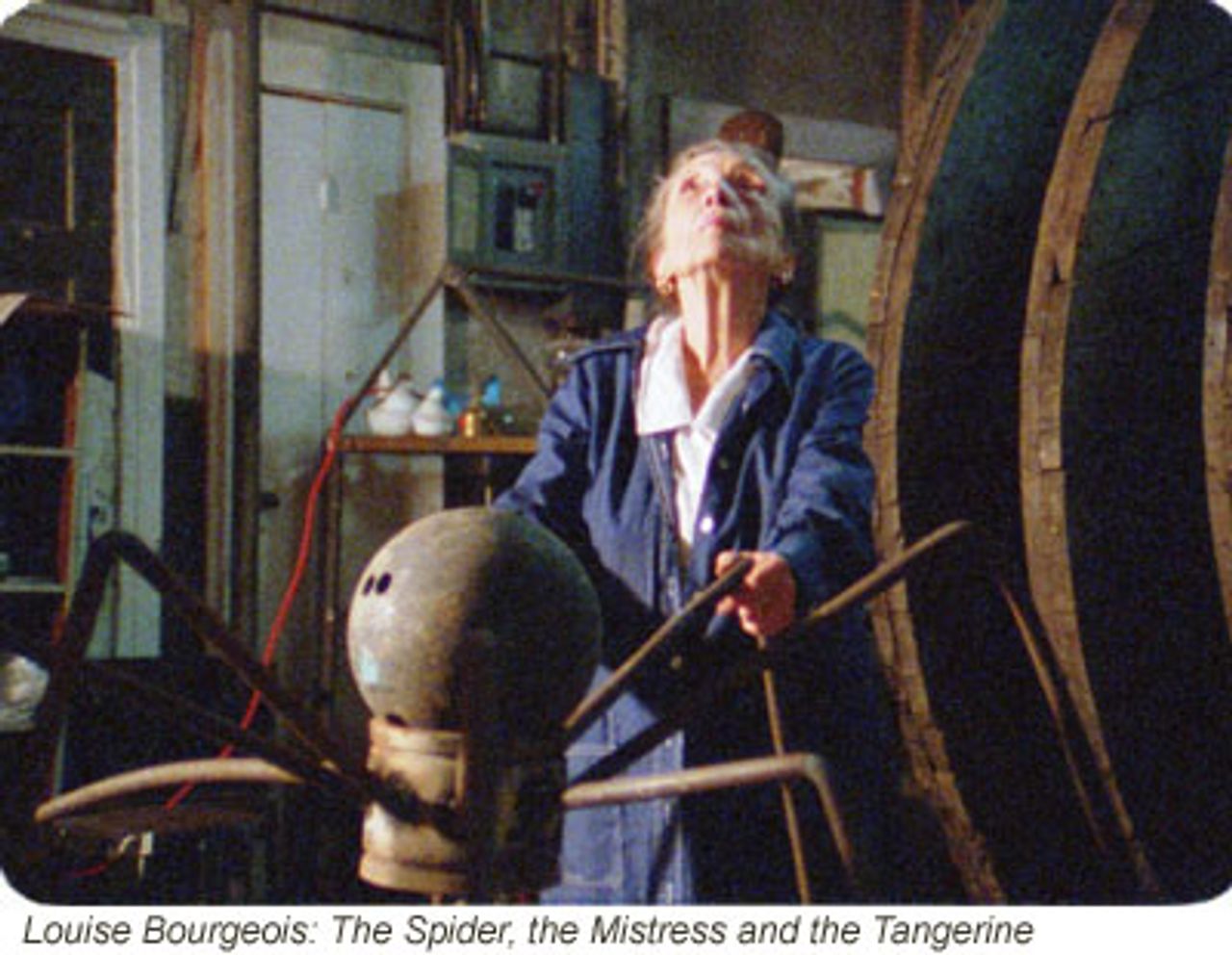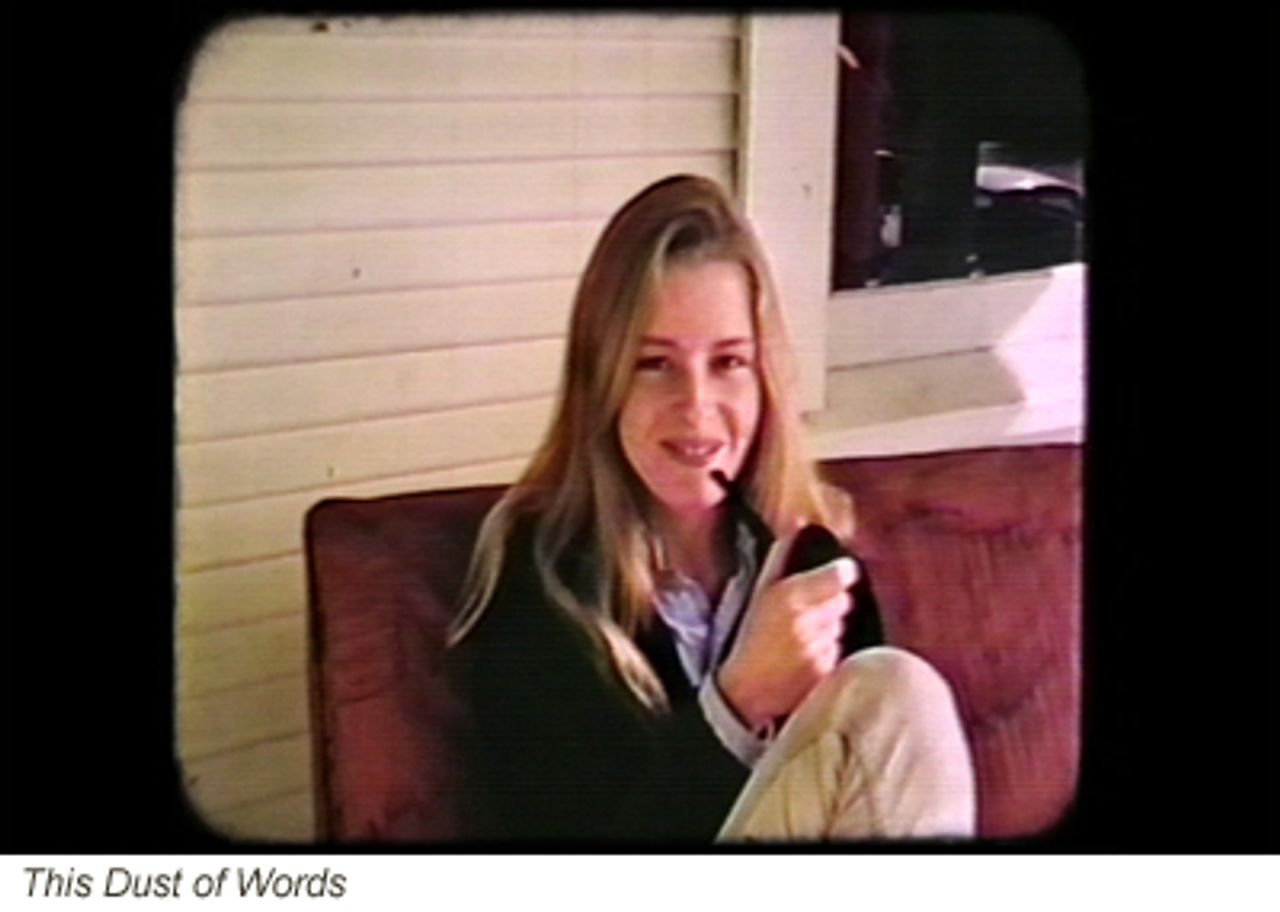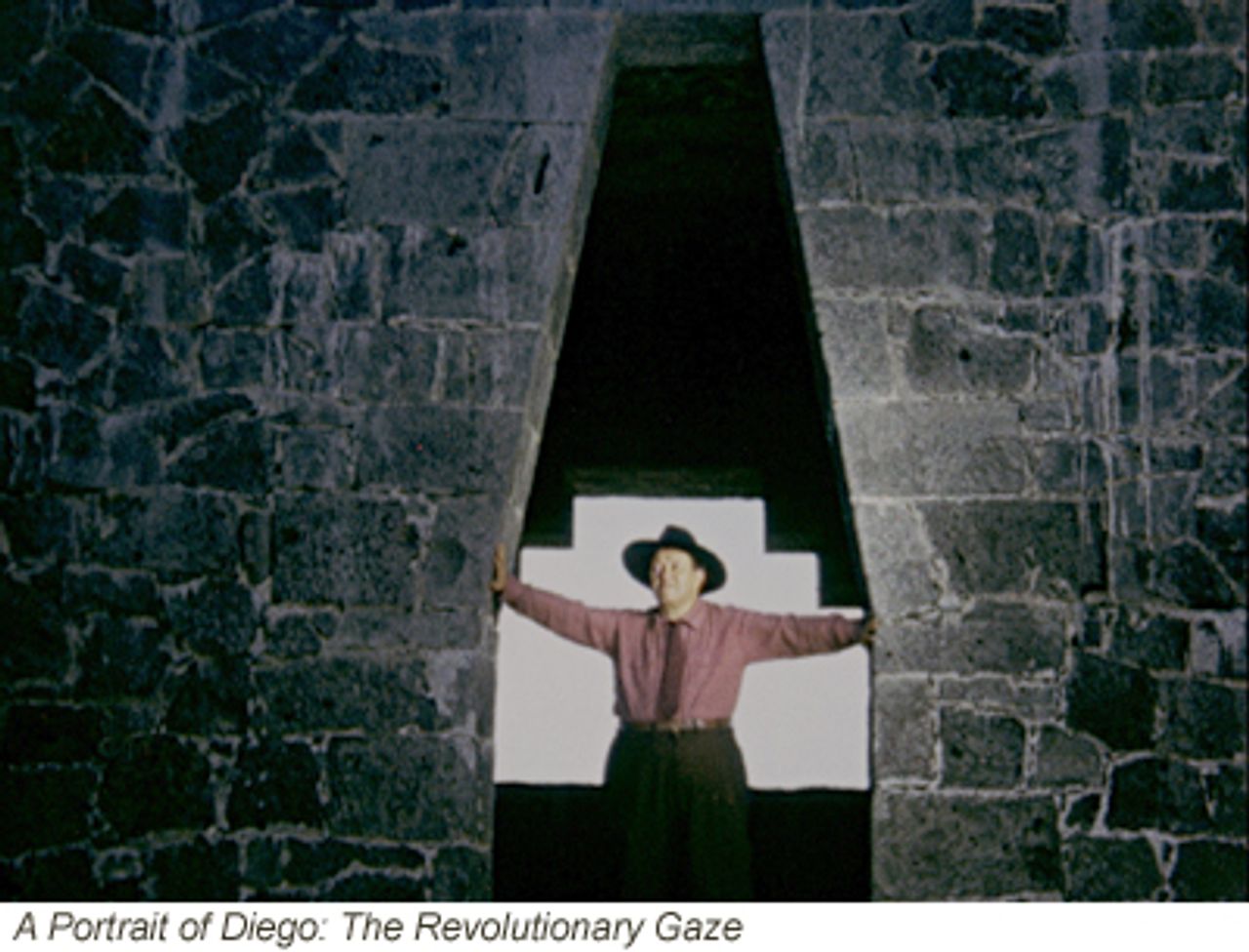This is the second in a series of articles on the recent Vancouver International Film Festival (September 25-October 10).
A number of films at the Vancouver festival dealt with major artistic figures of the twentieth century, as well as some of our more recent artistic and intellectual traumas.
Of Mexican artist Diego Rivera (1886-1957), Leon Trotsky wrote in 1938: “In the field of painting, the October Revolution has found her greatest interpreter not in the USSR, but in faraway Mexico ... But that which inspired him [Rivera] in these magnificent frescoes, which lifted him up above the artistic tradition, above contemporary art in a certain sense, above himself, is the mighty blast of the proletarian revolution. Without October, his power of creative penetration into the epic of work, oppression and insurrection would never have attained such breadth and profundity. Do you wish to see with your own eyes the hidden springs of the social revolution? Look at the frescoes of Rivera. Do you wish to know what revolutionary art is like? Look at the frescoes of Rivera.”
No one else has ever so accurately identified the source of the attraction of Rivera’s art. Given his pride of place, any serious contact with the artist and his work is significant.
On the 50th anniversary of Rivera’s artistic career in 1949, fellow Mexican artists, cinematographer Gabriel Figueroa (1907-1997) and photographer Manuel Álvarez Bravo (1902-2002), proposed that all three collaborate on a commemorative documentary combining their respective talents. Álvarez Bravo would film, Figueroa would produce and Rivera would be the subject, allowing himself for the first time to be filmed while working. When Rivera died in 1957, so did the project and the footage was forgotten.
Some sixty years later, Figueroa’s son, Gabriel Figueroa Flores, and Rivera’s grandson, Diego López Rivera, retrieved the uncompleted film. This formed the basis for their documentary, Un retrato de Diego (A Portrait of Diego: The Revolutionary Gaze). The footage they unearthed is composed of structured shots of Rivera drawing in various settings. The artist is shown carefully observing a group of women of Tehuantepec, flower sellers in Xochimilco and painting a portrait of Dolores del Rio in his studio.
Interspersed in the footage are interviews with the daughters of Rivera and Bravo, as well as comments from the documentarians. Other talking heads include journalist and critic Carlos Monsiváis and painter José Luis Cuevas.
The comments are generally intelligent and cosmopolitan. However, as might be expected, the greatest questions of the twentieth century are largely omitted. While there is interesting discussion of the Mexican Revolution and its impact on Rivera and the others, there is not one reference to the October Revolution, which, as Trotsky indicated, was the greatest influence on Rivera and permitted him to go beyond the confines of Mexican nationalism, at least in the most fruitful phase of his work.
In fact, as the documentary points out, Rivera and others artistically (and politically) opposed the idealization of the Mexican revolution, an undertaking that helped the Mexican bourgeoisie conceal the unfinished and aborted character of the social process in that country, in which the ‘People’ became a myth.
Rivera worked in a different tradition, with a great concern for the historical process and the fate of the oppressed. This is what helped him become “unfashionable,” as one of the commentators significantly notes, someone who had “little to do with modern art.” He was an artist who believed that “a theme is worthwhile if it’s treated with aesthetic quality.” Ordinary people, women carrying jugs on their heads, a nursing mother, a girl gathering flowers ...
To the segments of Rivera painting his subjects, Lores and López add 1949 footage of the Palacio de Bellas Artes’ exhibition of some 500 works of Rivera. The murals are breathtaking both in quality and grandeur.
One of Rivera’s extraordinary murals, painted over three floors, can only be appreciated ‘cinematically,’ as a moving image. As a critic notes, it was intended to be at once a geography lesson; the history of humanity and the revolution; and the history of art from the Byzantine epoch to the modern day.
Also seen in the film are examples of Bravo’s atmospheric photographs and Figueroa’s fruitful collaboration with filmmaker Luis Buñuel, who was in exile from Spain after the country’s civil war.
Footage of Rivera in the process of building his Anahuacalli Museum panoramically scans his vast personal collection—tens of thousands of pieces—of pre-Columbian artifacts. Even if the commentary is somewhat weak, the images here speak to a great artist and an era of intense artistic and political turmoil.
Louise Bourgeois: The Spider, the Mistress and the Tangerine is an intimate encounter with the 96-year-old sculptress that includes film and video archive of Bourgeois’s life and art. American filmmakers, Amei Wallach (in her directorial debut) and Marion Cajori (who died of cancer shortly before the film was completed), focus on interviewing Bourgeois in her Brooklyn studio, along with her son Jean-Louis and long-time assistant Jerry Gorovoy.

Wallach and Cajori filmed nearly her entire body of work from 1938 to 2007; throughout the documentary the co-directors have included brief shots of pieces taken at exhibitions in the US, Italy, Spain and England. Bourgeois is a dynamic, intelligent personality, always ready to pounce on a topic of discussion with ferocity. But it is her art, frankly, rather than her explanation of her art, that grabs hold.
Bourgeois was born in France in 1911 on the eve of the first world war. Not old enough to have consciously experienced the Russian Revolution, she was sufficiently intrigued by that event to twice visit the Soviet Union. However, like many sensitive artists of that generation, her intellectual life came to be dominated by the crimes of Stalinism and disillusionment in ‘communism’ and social life in general. Her official artistic career commenced in 1934, the year free artistic life in the USSR was formally ended.
In addition, there was the betrayal and defeat of the French working class under the Popular Front government of 1936. Bourgeois moved to the US in 1938. All these events go a long way toward explaining why she was propelled toward seeing art so utterly personally, as “the definition of self-realization.” Looking at the larger world became too painful. Most memories are unbearable. It is a mistake to judge Bourgeois’s body of work solely by how she describes it, to take her words strictly at face value. Her art is much more than a “daring journey into her own psyche,” as the filmmakers tag it.
Bourgeois hits at deep emotional levels. But her oeuvre would be less affecting if those did not have a wider, more objective significance. For example, her 1940 sculptures, “Personages,” are devastated human forms, long and emaciated. Though she claims that she “re-created all the people I left behind in France,” they more bring to mind victims of the Holocaust. This is also the case with the 1949 sculpture, Blind Leading the Blind. Bourgeois’s Cell period beginning in the late 1980s is made up of haunting installations, evoking imprisonment in different forms, physical and mental, individual and social.
The film confirms Bourgeois’s inexhaustible need to overthrow old forms and create new imagery. Her range of materials and ideas is impressive. By virtue of their intensely honest nature, her efforts defy simple appropriation by those concerned with narrative issues such as gender and sexuality. She mines the subject matter ardently and with skill. In this harsh process, certain universal truths inevitably emerge.
Bourgeois’s formative years were shaped by the art of Rodin and Fernand Léger, under whom she studied. In the late 1930s, she had daily contact with Arp, de Chirico, Dali, Duchamp, Giacometti, Miró, Picasso and Man Ray, some of the most remarkable figures of the day. Approaching 100 years old, she continues to work with mind-boggling vigor. (“Anxiety remains and the anxiety makes me work more.”) If there is an inward concentration in her art, it should be remembered that Bourgeois came into artistic maturity at a time of unparalleled setbacks for the cause of human emancipation. She continues to artistically pick at her wounds.
Canadian documentarian, Annette Mangaard, spotlights an influential trio of Canadian artists who were active from 1969 to 1994, in General Idea: Art, AIDS, and the fin de siècle. As a radical gay collective, under the name General Idea, Felix Partz, Jorge Zontal and AA Bronson pioneered conceptual and media-based art. They published an art magazine called “FILE,” which made them famous and drew legal fire from the publishers of “LIFE” magazine, its obvious target. Touring Europe in the 1970s, they exhibited at leading museums in Amsterdam, Berlin and Paris and founded Art Metropole in 1974, a space dedicated to contemporary art in various formats, such as books, video and electronic media.

As AIDS became a crisis, their work addressed the viral plague. General Idea created a major installation for the Museum of Modern Art in New York City, called, “One Year of AZT/One Day of AZT.” Even after the deaths of both Partz and Zontal from AIDS in 1994, retrospectives of General Idea continue to tour Europe and North America. The group’s survivor, A.A. Bronson, provides the moving narration for the documentary. The General Idea Archive is housed at the Library of the National Gallery of Canada.
Overall, one senses intelligence and sensitivity in their work, a biting satirical edge and anger at the ravages of disease and official neglect. Moreover, there is an obvious artistic precision and mastery of certain forms. How much of the ‘conceptual’ art work of the time will endure is perhaps another issue.
This Dust of Words by American documentarian Bill Rose recounts the life and tragic decline and demise of Elizabeth Wiltsee, a talented young woman who died alone in an uninhabited California setting, after years of homelessness. Born in Cincinnati in 1949, she was the daughter of a Proctor and Gamble executive who took his family around the world.

By age four, Elizabeth had taught herself to read and by ten she was reading Homer in classical Greek. The brilliance of her Stanford University thesis on Samuel Beckett in 1969—the year Beckett won the Nobel Prize for literature—prompted her former professor to describe Elizabeth as “an uncommon voice and sensibility.” (Beckett’s Molloy provided the title for her work: “I’m all these words, all these strangers, this dust of words, with no ground for their settling, no sky for their dispersing.”)
After graduation, she was briefly on the fringes of the radical Students for a Democratic Society (SDS) and, later, the Green movement. Consumed by a love of words, she wrote ceaselessly while taking on editing jobs at various universities across the country. During that time, Elizabeth authored numerous stories, plays, and a 900-page novel. Most were never published.
By 1996, her wanderings stopped and serious mental instability took over. Underlying her desire “not to be interrupted in my thoughts,” was a spiraling descent into paranoid schizophrenia. She was eventually discovered sleeping in a churchyard in Watsonville, California, where she would spend her days reading and writing in the public library. There she honed her own translations of Li Po, the eighth century Chinese poet.
Refusing intervention from her family, it was the kindness of the parishioners and townspeople that gave Elizabeth her few moments of peace. In early 2000, her corpse was found 60 miles from Watsonville in a remote reservoir area. She had disappeared from the town some months before.
Twenty years before she vanished, Elizabeth wrote: “Nowhere was home to welcome her ... Too vast a world for her—and too unkind ...While the carrion birds circled to pick her bones. None would show mercy.”
The subject is fascinating, but what is the filmmaker trying to say? Was Wiltsee simply an unfortunate victim of a biochemical disorder, or was some physiological condition perhaps deepened by the disappointments of the ’60s’ generation and the unsavory climate of the 1980s and 1990s? It’s not clear. Like most documentarians today, the filmmaker chooses not to make a strong argument.
To be continued

